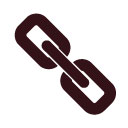
Feature Article: Non-billable Transactions
May 2023 Tags: Costs, Fees, Non-billable, Reports, Tabs3 Billing
No comments
Do you have a new pro bono client, or need to enter a fee or cost at no charge for a regular client? Clients and transactions can be marked as non-billable so that you can still track your time without charging your client.
Non-billable Clients
If you have a client for which there will be no billable time, you may want to mark the client as non-billable. Marking the client as non-billable prevents the accidental entering of billable transactions for the client. Transactions can still be entered, but they will default to a non-billable Bill Code.
To mark a client as non-billable
- From Tabs3 Billing Quick Launch, search for and select “Client Information.”
- From the Setup tab, in the Status section, select the Non-billable check box.
- Press Ctrl+S.
Non-billable Transactions
When fees (or costs) are entered, the transaction’s Bill Code can be specified as 1 – Non-Billable / Non-Printable if you do not want the transaction to be printed on a statement or 2 – Non-Billable / Printable if you want the transaction to be printed on a statement.
When using a Bill Code of 2 – Non-Billable / Printable, transactions will be printed on the statement, but the amount will display “n/c” to indicate that there is no charge for the transaction. If desired, this text can be changed via Statement Customization.
To change the “n/c” terminology
- From the Quick Launch, search for and select “Statement Customization.”
- On the Terminology tab, select Line 8 from the list.
- In the Line 8 field, change the text as desired up to 60 characters.
- Press Ctrl+S.
You can optionally configure transaction codes (tcodes) to default to a non-billable Bill Code. This means that when you select the tcode on a transaction, the Bill Code will already be set as non-billable.
To specify a Bill Code for a tcode
- In the Quick Launch, search for and select “Transaction Code Information.”
- On the Tcode tab, select the desired Tcode.
- Select the desired Bill Code.
- Press Ctrl+S.
In summary, there are three different ways to track non-billable transactions: mark the client as non-billable, specify a non-billable Bill Code when entering individual transactions, and/or configure tcodes to be non-billable. Take a look at these options and see which option is right for you the next time you need transactions to be non-billable.

KB Corner: Working with PracticeMaster Document Assembly
May 2023 Tags: Document Assembly, Microsoft Office Integration, PracticeMaster, Resources
No comments
Are you creating forms and letters manually? If so, you’re probably spending too much time on it. Take advantage of PracticeMaster’s document assembly feature instead! Not quite sure where to begin? First, take a look at how many documents your firm assembles and which documents would save you the most time by automating them. Start with those frequently used documents.
Then, take a look at Knowledge Base Article R11447, “Working with PracticeMaster Document Assembly.” This article provides information on how to create a document template, how to assemble a document, FAQs, and more!
Our Knowledge Base can be accessed at support.Tabs3.com. You can also access our Knowledge Base in the Quick Launch by searching for and selecting “Knowledge Base.”

Announcement: Effective June 2023 – No Longer Supporting Version 19
May 2023 Tags: Sunset, Version 19
No comments
As of June 1, 2023, the Tabs3 Support Team will no longer provide support for Version 19 of Tabs3 Software.
If you are using an older version of the software, now is the perfect time to get up to date with the latest version of Tabs3 Software. You will be surprised at the number of features you’ve been missing! Click here to see What’s New in each version.
Updating to the latest version is FREE when your firm is on an active Maintenance Plan. To get started, in the Quick Launch, search for and select “Check for Updates.”
If you have any questions regarding the discontinuation of support for Version 19, please contact your Tabs3 Software consultant, or a member of our Sales Department at sales@Tabs3.com or (402) 419-2200.
Previously published in April, March, February, January, November, and September.

Spotlight: Recurring Entries in Accounts Payable and General Ledger
May 2023 Tags: Accounts Payable, General Ledger, GL Journal Entries, Invoices
No comments
Do you have multiple AP checks and/or GL journal entries that need to be entered each month? Use recurring entries instead of manually entering them every time!
Accounts Payable Software (AP)
Recurring entries can be set up in AP and then added (posted) to the invoice file in a monthly batch. Rent, leases, parking, and mortgage payments are examples of recurring entries.
To add a recurring entry in AP
- In the Quick Launch, search for and select “Recurring Entry.”
- From the Recurring Entry tab, press Ctrl+N.
- Enter the desired information for the recurring entry.
- Press Ctrl+S.
Once recurring entries have been added to AP, they can quickly be posted using Post Recurring Entries. All recurring entries are posted to the invoice file unless the recurring entry is on “hold”. The word “AUTO” (automatic) is posted to the Voucher field for each invoice created from a recurring entry.
To post recurring entries in AP
- In the Quick Launch, search for and select “Post Recurring Entries.”
- Click OK.
General Ledger Software (GL)
Recurring entries can be set up in GL and then added (posted) to the journal file in a monthly batch. Examples of recurring entries include depreciation, amortization, notes payable, fixed investment income, rent, monthly lease payments, etc.
To add a recurring entry in GL
- In the Quick Launch, search for and select “Recurring Entry.”
- Press Ctrl+N.
- Enter the desired information for the recurring entry.
- Press Ctrl+S.
Once recurring entries have been added to GL, they can quickly be posted using Post Recurring Entries. Post Recurring Entries adds a batch of journal entries to the journal entry data file based on the information in the recurring entry file.
To post recurring entries in GL
- In the Quick Launch, search for and select “Post Recurring Entries.”
- Optionally remove the check from any items you do not want to post this month.
- Click OK.
Save time by posting all of your recurring entries at once instead of reentering the same information every month!
The Platinum edition of Tabs3 Software provides a multitude of benefits when working with reports. If reporting is important to your firm, take a look at the following reasons to upgrade now!
Platinum Report Accelerators
Platinum accelerators make processing reports and statements an average of 10 – 30 times faster. The reason for the speed boost is that all of the processing is done at the server instead of sending data back and forth across the network. This significantly affects the time it takes to run reports.
Take a look at actual benchmark numbers in Knowledge Base Article R11142, “Tabs3 Performance Comparison.” You might be surprised!
For more information on how accelerators work and a list of accelerated reports, see Knowledge Base Article R11182, “Tabs3 Billing and PracticeMaster Accelerators.”
Platinum Exclusive Report Options
When you upgrade to Platinum, you get bonus reporting options in Tabs3 Billing:
- Accounts Receivable by Timekeeper Report – This report provides a list of clients with fees due for each working timekeeper.
- Enhanced Detail Accounts Receivable Report – This report is available without Platinum; however, the Detail Information for Fees and Costs check box on the Format tab is Platinum only. Selecting this option provides a breakdown of fees by timekeeper and costs by cost type.
- Print accounts receivable balances as of a specific date on the Tabs3 Detail and Summary Accounts Receivable Reports. This option calculates the A/R based on records present in Tabs3, effectively showing what the A/R would have been on the given date, assuming no records have been deleted or modified.
For more information on the Accounts Receivable by Timekeeper Report and Enhanced Detail Accounts Receivable Report, see Knowledge Base Article R11379, “Platinum Overview.” If you have any questions regarding Platinum features, contact your Tabs3 Software consultant, or call Support at (402) 419-2210.

Quick Tip: Bypassing the User ID Prompt
May 2023 Tags: Users
No comments
Did you know that you can specify the User ID as a startup option for Tabs3 software? Once implemented, when double-clicking your desktop shortcut, the User ID will already be filled in, leaving only the password to be entered.
- Right-click the desktop icon used to start the Tabs3 Software application and select Properties.
- From the Properties window, click the Shortcut tab.
- The startup option can be entered following the program file name in the Target field. An example of the Target field when using the User ID startup option is:”C:\Program Files\Tabs3\TABS.EXE” ALICE
- Click OK.
For a list of other startup options available, open the desired Tabs3 Software application (e.g., Tabs3 Billing, PracticeMaster, etc.) and enter “Startup Options” on the Index tab. For more information on automating tasks, including using startup options, refer to Knowledge Base Article R11034, “Automating Tabs3 Software Maintenance Tasks.”

Billing Q&A: Configuring Client Budgets
May 2023 Tags: Clients, Tabs3 Billing
No comments
We have matters for which we only want to charge up to a set amount or set a limit for the total hours worked. Is there a way for Tabs3 Billing to notify us if we will exceed these limits?
Tabs3 Billing includes a Budget feature that allows you to set a maximum amount and/or hours per matter. Additionally, with matters configured for Task Based Billing, you can specify separate budgets by phase for both activity (fees) and expenses (costs). When you are entering fees or costs in Tabs3 Billing, PracticeMaster, or Tabs3 Accounts Payable, you will be notified before saving if the transaction will exceed the matter’s budget.
To configure a budget for a non-Task Based Billing matter
- In the Tabs3 Billing Quick Launch, search for and select “Client Information.”
- Select the Client ID for which you are creating a budget.
- Click the Budget tab.
- In the Hours to Bill field, specify the maximum total hours you want to bill the client for this matter.
- In the Amount field, specify the maximum amount you want to bill the client for this matter.
- Select the Warn if Budget Exceeded check box.
- Press Ctrl+S.
To configure phase-level budgets for a Task Based Billing matter
- In the Tabs3 Billing Quick Launch, search for and select “Client Information.”
- Select the Client ID for which you are creating a budget.
- Click the Budget tab and then click the Budget button.
- In the Phase/Task field, select the phase for which you are creating a budget.
- In the Activity Amount field, specify the maximum fee amount you want to bill for the selected phase.
- In the Expense Amount field, specify the maximum cost amount you want to bill for the selected phase.
- Click Save Record.
- Repeat steps a-d for each phase you want to budget.
- Click OK.
- Select the Warn if Budget Exceeded check box.
- Press Ctrl+S.

PracticeMaster Q&A: Quick Alarms
May 2023 Tags: Alarms, PracticeMaster
No comments
Is there any way to create an alarm without having to create a calendar record?
Quick Alarms can be created without adding a calendar record. Simply enter an Alarm Time and Description, and save. Quick Alarms can only be created for the current day and the user creating it. Additionally, if PracticeMaster is closed on the workstation where the quick alarm was created, the Quick Alarm will be deleted.
To create a Quick Alarm
- In the Quick Launch, search for and select “Active Alarms.”
- Press Ctrl+N.
- Enter an Alarm Time.
- Enter a Description.
- Click OK.

Trust Accounting Q&A: Positive Pay Export
May 2023 Tags: Bank Accounts, Trust Accounting
No comments
Our bank has started offering a Positive Pay service and we want to start participating. Does Trust have that capability?
Both Tabs3 Trust Accounting (Trust) and Tabs3 Accounts Payable (AP) include the ability to export a Positive Pay file which can be submitted to your bank.
To configure the Positive Pay export for the first time
- In the Quick Launch, search for and select “Positive Pay Export.” A First Time Configuration wizard will be displayed.
- Select the Bank Account you want to configure and then click Next.
- Specify which additional columns you want to include in the export file. If you are not sure which columns to include, contact your bank to determine their requirements.
- Specify whether to include voided checks in the export file and if so, which character to use as an indicator, then click Next.
- Specify the date range of the checks you want to export and click Next.
- Specify the location to which to save the export file and click Export.
You can now upload the export file to your bank. For future exports, any new checks added since the last export will be included by default.
For more information on using Positive Pay and steps to configure additional banks, see Knowledge Base Article R11833, “Exporting Checks Using Positive Pay.”

Accounts Payable Q&A: Duplicate Invoices
May 2023 Tags: Accounts Payable, Invoices
No comments
We had two users enter the same invoice. This resulted in two checks being printed for the same invoice. Is there a way we can prevent this from happening in the future?
There is a setting in Customization to check for duplicate invoices. When this setting is selected, a warning will be displayed if an invoice or manual check is entered for the same vendor, with the same invoice number, invoice date, and invoice amount as an existing unpaid invoice. This setting will check when a new invoice is entered as well as when an existing invoice is changed and saved.
To enable Check for Duplicate Invoices
- In the Quick Launch, search for and select “Customization.”
- On the Main tab, select the Check for Duplicate Invoices check box.
- Press Ctrl+S.

General Ledger Q&A: Invert Balance Types
May 2023 Tags: General Ledger, Reports
No comments
When I run my Balance Sheet Report, I see that some of the accounts are printing the right amount, but show as negative instead of positive. Is there a way to change this?
There is an option to Invert Balance Type. When this check box is selected, it will invert how an account’s balance is displayed on reports from positive to negative or vice versa.
To invert an account’s balance type
- In the Quick Launch, search for and select “Chart of Accounts.”
- Double click the account that is printing as a negative.
- On the Report Options tab, in the Advanced section, select or clear the Invert Balance Type check box.
- Click Save.
- Repeat steps 2-4 for any other accounts that are showing as negative and should be positive or vice versa.
Now when you print the Balance Sheet Report, the accounts will show the same amount but will no longer be negative.
Recent Comments
- Tabs3 Software on Feature Article: Year-End is Fast Approaching!
- Linda Thomas on Feature Article: Year-End is Fast Approaching!
- James Hunter on Spotlight: Reorder Fees
- Tabs3 Software on Video of the Month: PracticeMaster Conflict of Interest
- Stephanie Biehl on Video of the Month: PracticeMaster Conflict of Interest
